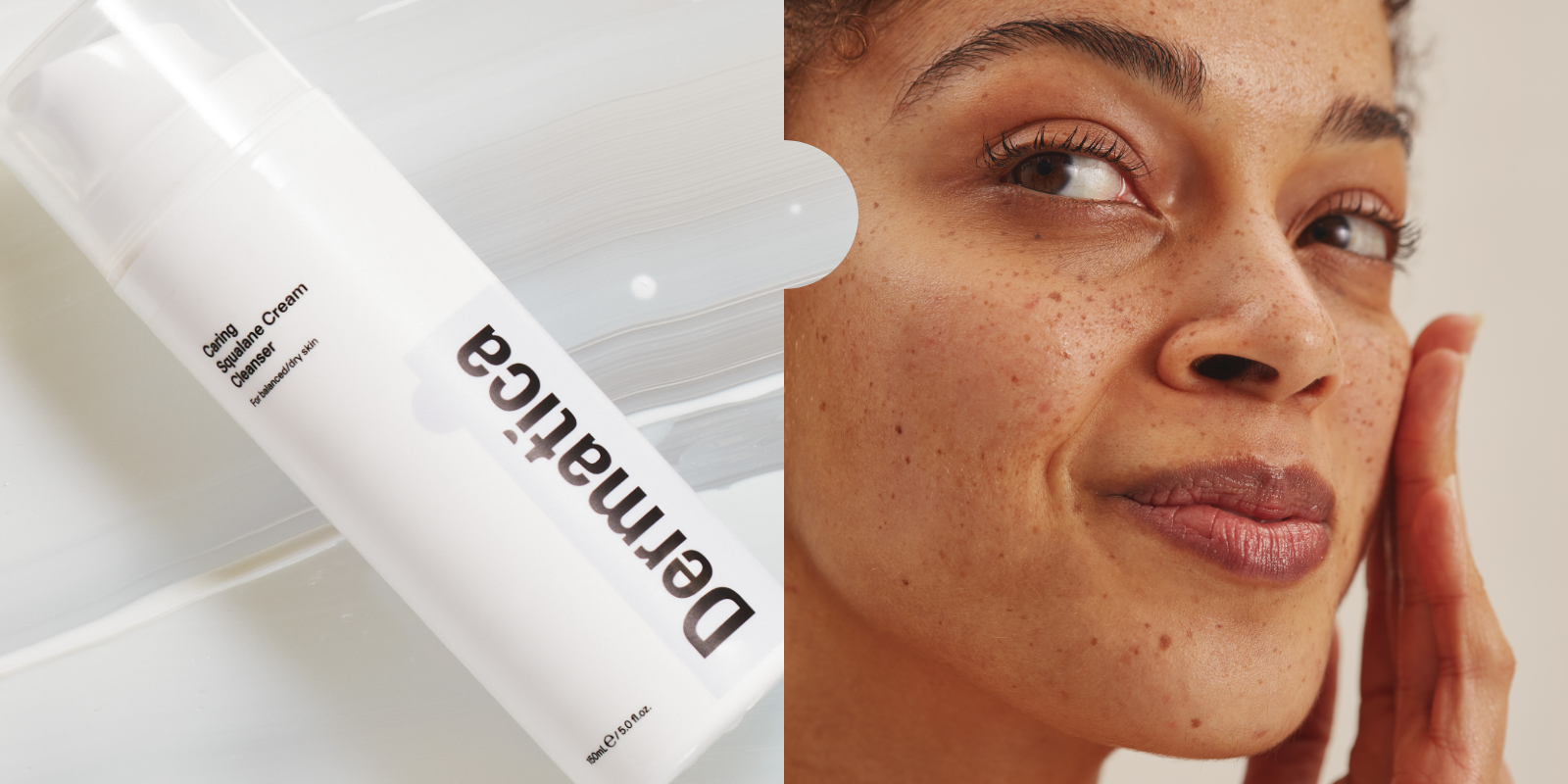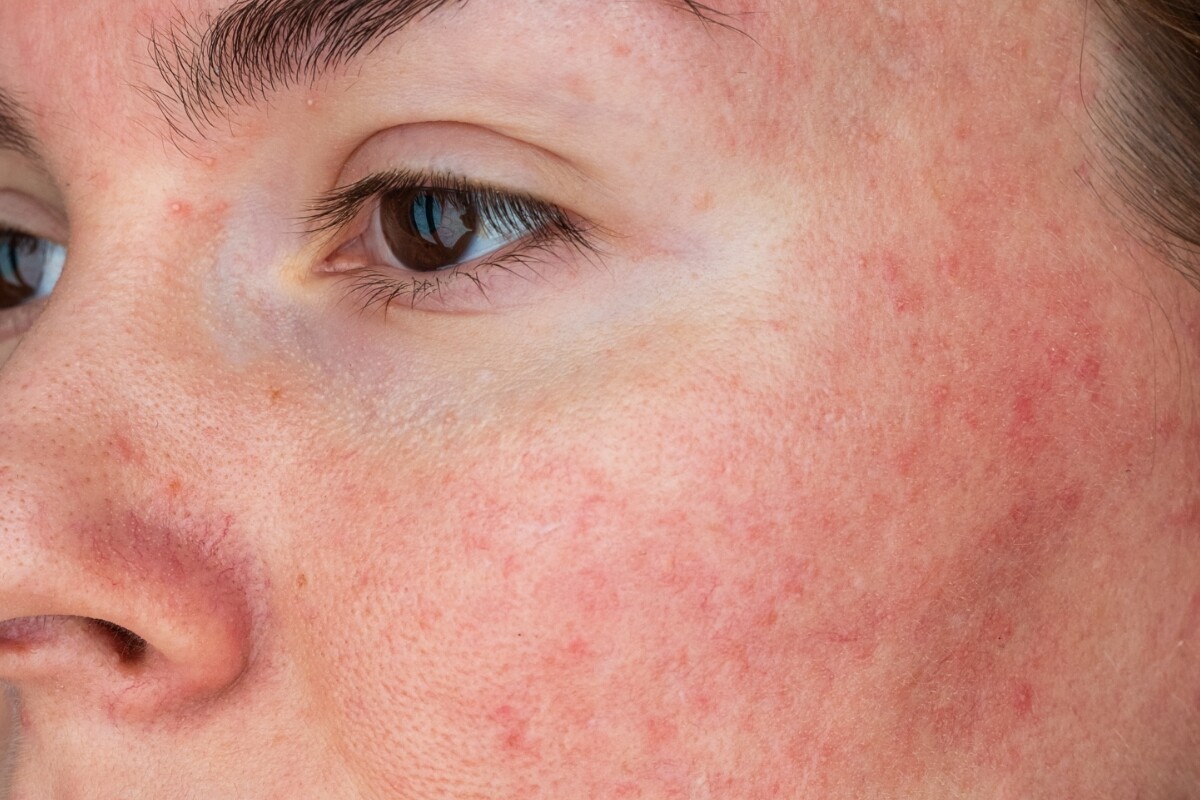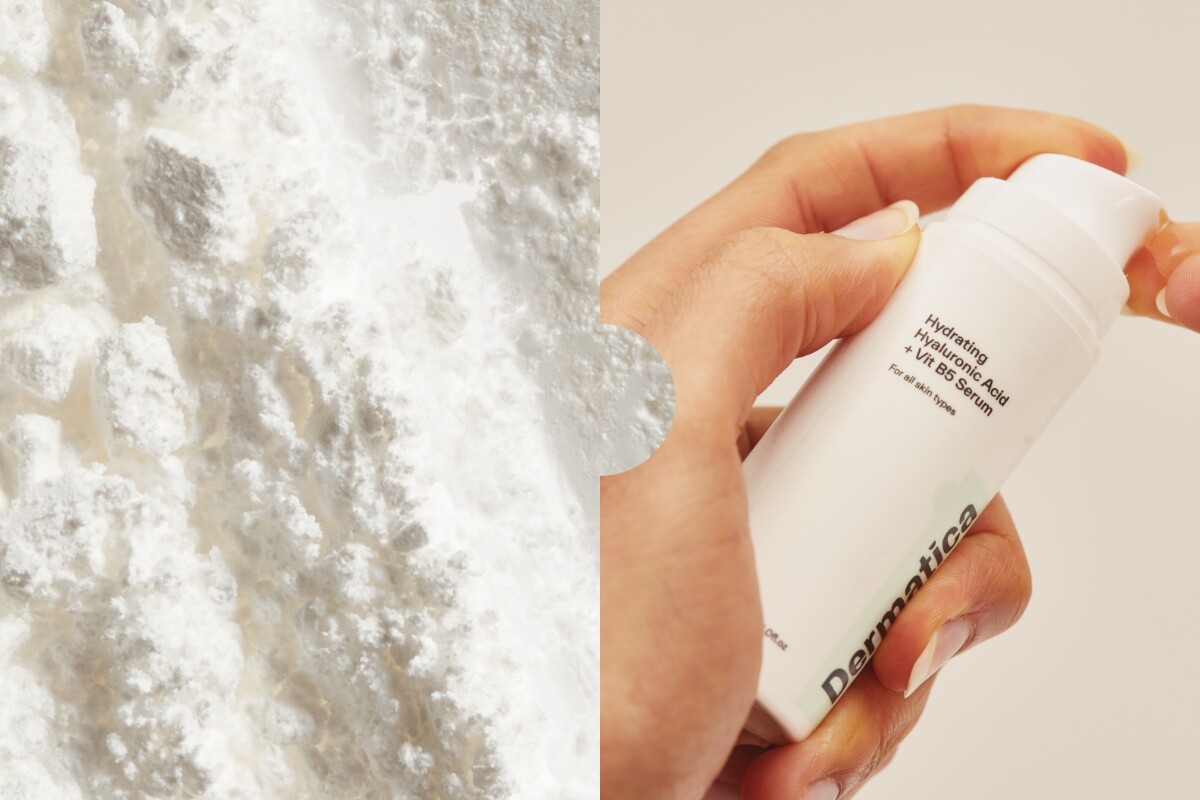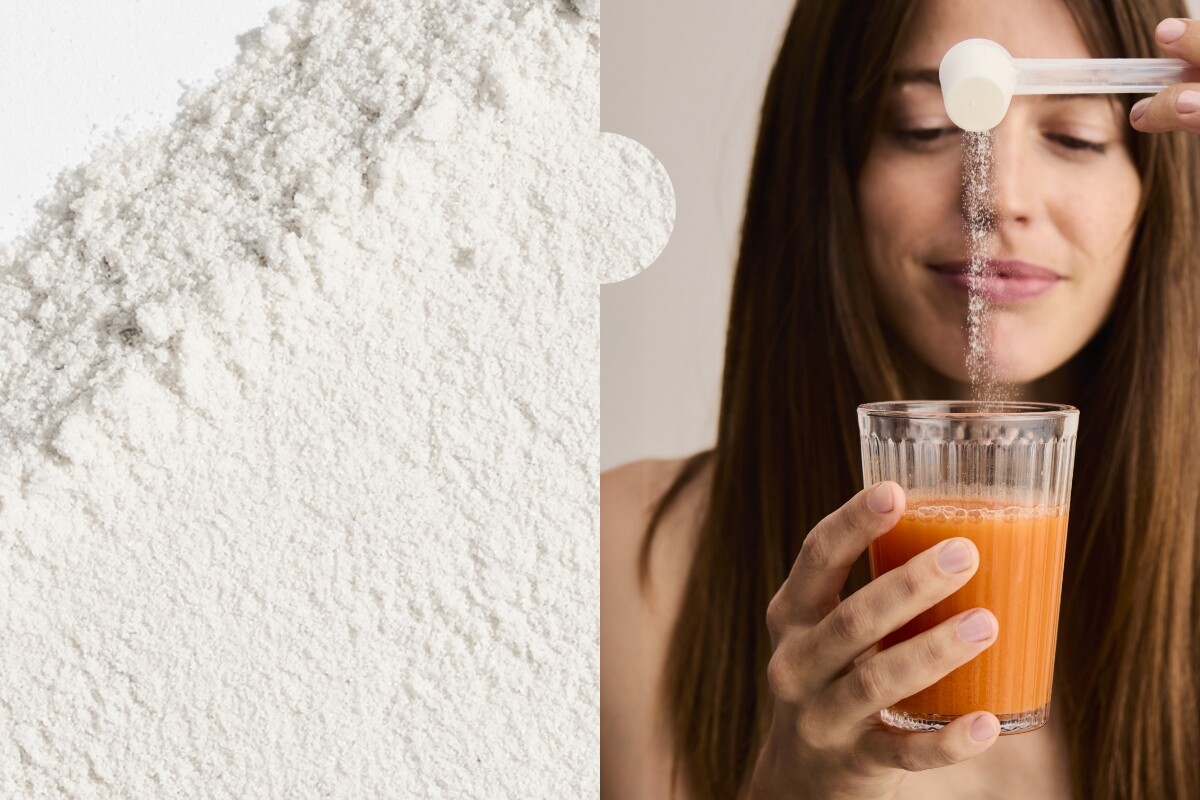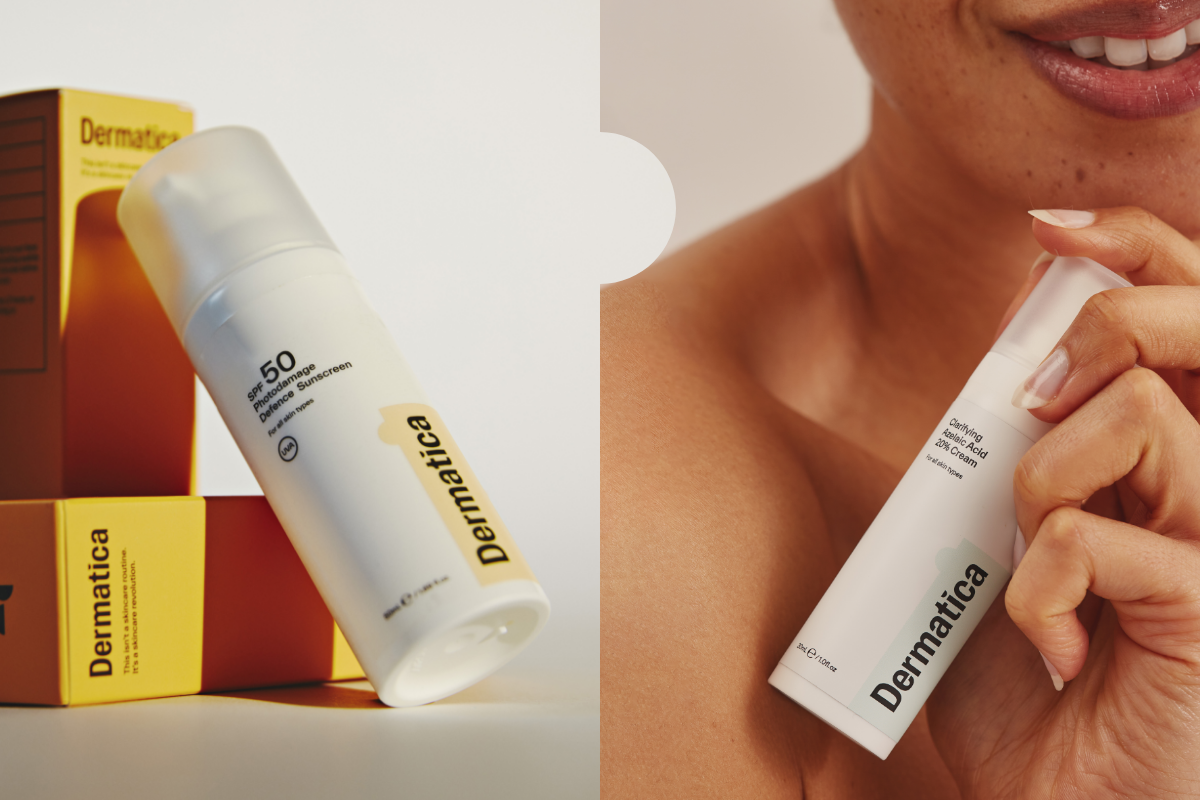The skin barrier — the outermost layer of the skin — is the layer we need to look after to look good. A healthy skin barrier is supple, smooth and glowy.
But lots of things can stress the skin barrier, including some active skincare ingredients, overly harsh exfoliation or certain skin conditions. So how can you be sure your skincare is working hard enough to protect it — and how will you know when your skin barrier is struggling?
Scroll down to learn more.
Your incredible skin
Your skin is a truly incredible organ with vital functions that keep you alive. It keeps out bacteria, chemicals and allergens, and helps stave off the effects of temperature extremes and UV radiation. And perhaps most importantly — it stops you drying out.
This crucial protection against dehydration is largely down to the integrity of the skin barrier. So looking after this layer really matters.
What is the skin barrier?
Generally, when we talk about the skin barrier, we mean the stratum corneum. This is the outermost layer of the epidermis, which is in turn the outer layer of your skin.1
The function of the stratum corneum is to keep out the bad stuff, like bacteria — and keep in the good stuff, like water.
The stratum corneum is mostly made up of specialised cells called corneocytes.2 These are flattened cells, stacked up in overlapping layers. Between the layers and holding everything together is a matrix of fats, including natural ceramides.1
The skin barrier can only work properly when it’s hydrated.1 If it becomes dehydrated, essential chemical processes can’t happen. This means skin cells can’t turn over normally, resulting in changes to how your skin looks and feels.
What can affect the skin barrier?
If the skin barrier becomes disrupted, this increases water loss, a process called trans-epidermal water loss (TEWL). This further weakens the barrier.3
There are many possible causes of skin barrier damage — but knowing what they are can help you avoid them:
Harsh cleansers — Some cleansers contain chemicals that interact with the stratum corneum and remove the natural oils that it needs to stay supple and hydrated.4
Exfoliants — Exfoliation with acids such as AHA is designed to remove the outer layers of corneocytes, but going in too strong with exfoliants can disrupt the skin barrier.5
Physical exfoliation — Rubbing at your skin with face scrubs, abrasive pads or brushes can cause damage to the top layers of your skin, leaving it red, stinging or sensitive.
Hair removal — shaving and other forms of hair removal such as waxing or laser treatment can often be accompanied by skin barrier damage.6
Active skincare ingredients — One of the side effects of retinoids, such as tretinoin or adapalene, can be redness, irritation and barrier disruption.7
Ageing — A key feature of ageing is changes to the skin barrier, which explains why older skin can be drier.8
Stress — Studies have shown that stressful events can directly impact the proper function of the skin barrier.9
Sun exposure — UV radiation, in particular UVB, reduces barrier function, increasing water loss and causing abnormalities in the structure of corneocytes.10
Skin conditions — In any skin condition, such as eczema, psoriasis and dermatitis caused by a chemical or other substance, there is skin barrier disruption.3
Sensitive skin can be a sign that your stratum corneum is thinner, with fewer corneocytes.11 So, you may need to work harder to take care of it, and take things slowly if you’re using active ingredients. But there’s no reason why you can’t keep your skin looking and feeling at its best, whatever your skin type.
Can actives damage skin barrier?
Yes. You may already know that certain active ingredients, in particular retinoids like tretinoin, can cause side effects. These include redness, stinging or dry, flaky skin.12
The stratum corneum is being continually replaced, with new cells coming to the surface from the layers below. Retinoids speed up the rate at which new cells come to the surface. While the skin adjusts to this, there can be a phase when the top layer is disrupted, resulting in skin barrier side effects.13 These usually improve after a few weeks.
You can minimise side effects by making sure your skin barrier is in good shape before you begin, and building up your treatment gradually.
How do I know if my skin barrier is damaged?
You’ll probably know if your skin barrier is damaged — unfortunately, the signs are hard to miss.
When the barrier is damaged, there’s more water loss than the stratum corneum can cope with. The first sign is often dryness or tightness, which may progress to other signs, including:14
Flaky patches
Roughness
Redness
Itching
Irritation, burning or stinging
How do I keep my skin barrier healthy?
To keep your skin barrier healthy, you need to keep it well hydrated. The right skincare will help you do this, and moisturising is a critical step.
But not all moisturisers are equal. In fact, some could even make the skin function worse.15 So it’s important to look for one with ingredients that are proven to support skin barrier function and repair.
The simplest moisturisers work by coating the surface of the skin with a water resistant layer, called an occlusive, that stops water passing in or out. Occlusive ingredients include petrolatum and lanolin.15 These might be enough for you if your skin is young and healthy, with no issues.
The next step is to include humectants, substances which actively draw water into the skin.15 Glycerin and hyaluronic acid are humectants.
Another useful ingredient is an emollient, an oil that can improve the texture of the formula and help prevent moisture loss.15 Squalane, which is similar to your skin’s natural sebum, is an example of an emollient.
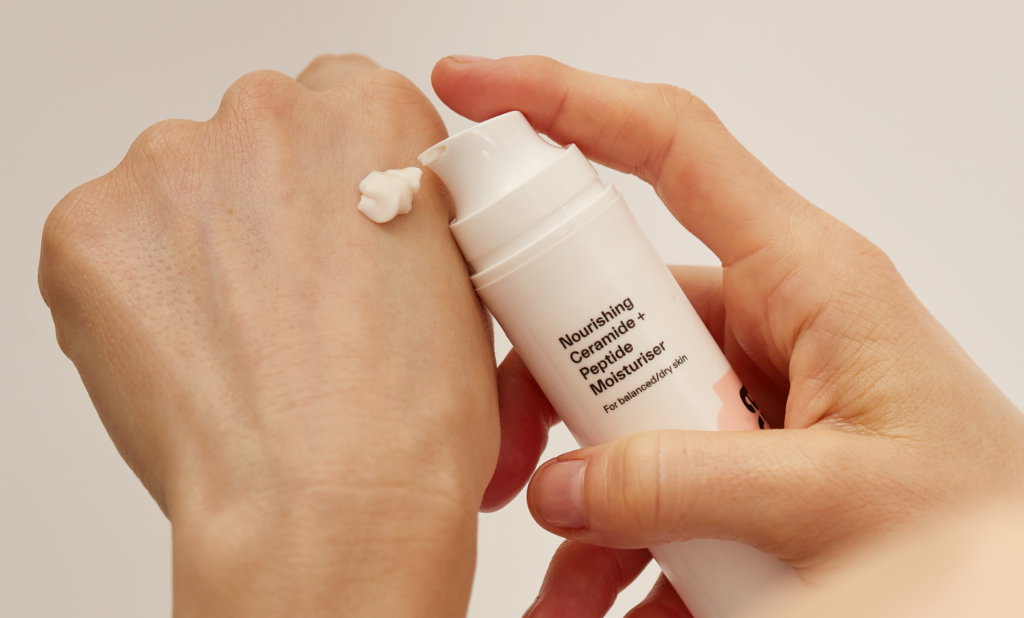
How do I repair my skin barrier?
If your skin barrier needs more intensive protection or repair, you’ll need a moisturiser with ingredients that work to keep structure of the stratum corneum healthy. There’s a host of ingredients to look out for, which affect slightly different aspects of the skin barrier structure, but which can all build strength if your barrier is struggling.
One important ingredient is some form of fat-like substance to build up the matrix between the corneocytes.15 Natural ceramides make up a large proportion of this matrix.16 Good barrier repair creams will often contain a synthetic version of ceramides.
There’s evidence that a mix of ceramides will help repair the skin.15 Other proven ingredients include:
Niacinamide
Panthenol
Shea butter
How to balance the side effects of your actives
It’s really important to look after your skin barrier when you’re using actives such as tretinoin — especially if you’re experiencing side effects.5
Using a good barrier repair moisturiser in the right way can really help.
It’s a good idea to make sure your skin barrier is as healthy as possible before you begin your retinoid treatment. One study in a group of 50 women looked at the benefits of pre-treating skin with a barrier-boosting moisturiser before starting on topical tretinoin. They continued with the moisturiser throughout tretinoin use.5
The moisturiser contained niacinamide, panthenol, and tocopheryl acetate (a form of vitamin E, which is an antioxidant). A control group used a moisturiser that didn’t contain these ingredients.
Results showed less skin water loss in the women using the treatment moisturiser. Participants also noticed less dryness, peeling, stinging, itchiness, irritation and breakouts compared to those using the control moisturiser.5
So, choose a good quality moisturiser with effective ingredients, and apply it generously twice a day for two weeks before you begin topical retinoid treatment.
Once you’ve started treatment, continue to use your barrier boosting moisturiser:
Every morning after you cleanse
Every night after your active formula, if you’re using one
Before your active formula as well, if irritation is a problem
And of course, don’t forget daily sunscreen, to give your barrier that extra protection. Here are our tips:
Use sunscreen (over SPF 30 with UVA and UVB protection) every morning — even when it’s cloudy.
Apply it about 10-20 minutes before heading out to give it time to absorb.
Follow the instructions on the bottle — this might mean applying more than you think.
Following these steps should help to keep your skin barrier strong, supple and healthy. And of course, if you sign up to Dermatica, our skin experts are always on hand to answer your questions and offer support when you need it.
References
Rawlings AV, Harding CR. Moisturization and skin barrier function. Dermatol Ther. 2004;17 Suppl 1:43-48. doi:10.1111/j.1396-0296.2004.04s1005.x
Proksch E, Brandner JM, Jensen JM. The skin: an indispensable barrier. Exp Dermatol. 2008;17(12):1063-1072. doi:10.1111/j.1600-0625.2008.00786.x
Loden M. Role of Topical Emollients and Moisturizers in the Treatment of Dry Skin Barrier Disorders. Am J Clin Dermatol 2003; 4 (11): 771-788
Ananthapadmanabhan KP, Moore DJ, Subramanyan K, Misra M, Meyer F. Cleansing without compromise: the impact of cleansers on the skin barrier and the technology of mild cleansing. Dermatologic therapy. 2004 Feb;17:16-25.
Draelos ZD. Revisiting the skin health and beauty pyramid: A clinically based guide to selecting topical skincare products. J. Drugs Dermatol. 2021 Jun 1;20:695-9.
Dabboue H, Builles N, Frouin É, Scott D, Ramos J, Marti-Mestres G. Assessing the impact of mechanical damage on full-thickness porcine and human skin using an in vitro approach. BioMed research international. 2015 Jul 13;2015.
Mukherjee S, Date A, Patravale V, Korting HC, Roeder A, Weindl G. Retinoids in the treatment of skin aging: an overview of clinical efficacy and safety. Clinical interventions in aging. 2006 Jan 1;1(4):327-48.
Krysta Binieka, Joseph Kaczvinskyb, Paul Mattsc, Reinhold H. Dauskardta,*Understanding age-induced alterations to the biomechanical function of human stratum corneum. Journal of Dermatological Science
Altemus M, Rao B, Dhabhar FS, Ding W, Granstein RD. Stress-induced changes in skin barrier function in healthy women. Journal of Investigative Dermatology. 2001 Aug 1;117(2):309-17.
Meguro, S., Aral, Y., Masukawa, K., Uie, K. and Tokimitsu, I. (1999), Stratum Corneum Lipid Abnormalities in UVB-lrradiated Skin. Photochemistry and Photobiology, 69: 317-321. https://doi.org/10.1111/j.1751-1097.1999.tb03292.x
E. Berardesca*, M. Farage† and H. Maibach‡. Review Article Sensitive skin: an overview. International Journal of Cosmetic Science, 2013, 35, 2–8
Sorg O, Kuenzli S, Saurat JH. Side effects and pitfalls in retinoid therapy. InRetinoids and carotenoids in dermatology 2007 Jun 20 (pp. 245-268). CRC Press.
Fisher GJ, Voorhees JJ. Molecular mechanisms of retinoid actions in skin. FASEB J. 1996;10(9):1002-1013. doi:10.1096/fasebj.10.9.8801161
Del Rosso JQ, Levin J. The clinical relevance of maintaining the functional integrity of the stratum corneum in both healthy and disease-affected skin. The Journal of clinical and aesthetic dermatology. 2011 Sep;4(9):22.
Elias PM, Wakefield JS, Man MQ. Moisturizers versus current and next-generation barrier repair therapy for the management of atopic dermatitis. Skin Pharmacology and Physiology. 2019;32(1):1-7.
Berkers, T., et al., Topically Applied Ceramides Interact with the Stratum Corneum Lipid Matrix in Compromised Ex Vivo Skin. Pharmaceutical Research, 2018. 35(3).
Mohammed, D., et al., Influence of niacinamide containing formulations on the molecular and biophysical properties of the stratum corneum. International journal of pharmaceutics, 2013. 441(1-2): p. 192-201
Stettler, H., et al., A new topical panthenol-containing emollient: Results from two randomized controlled studies assessing its skin moisturization and barrier restoration potential, and the effect on skin microflora. The Journal of dermatological treatment, 2017. 28(2): p. 173-180.
Ayanlowo, O., et al. Shea butter as skin, scalp, and hair moisturizer in Nigerians. Dermatologic Therapy, 2021. 34(2).
Jane McQueen
Jane McQueen is a medical copywriter with over 15 years of experience in health content. She’s worked across all healthcare sectors, creating evidence-based content on topics from skincare to mental health. She has a life sciences background, with a degree in physiology and a PgDip in public health.
Cat Hyatt
Dr Cat Hyatt is a GP, working as Clinical Content Lead for Dermatica. She has a special interest in medical content and making healthcare information accessible and understandable for all.

